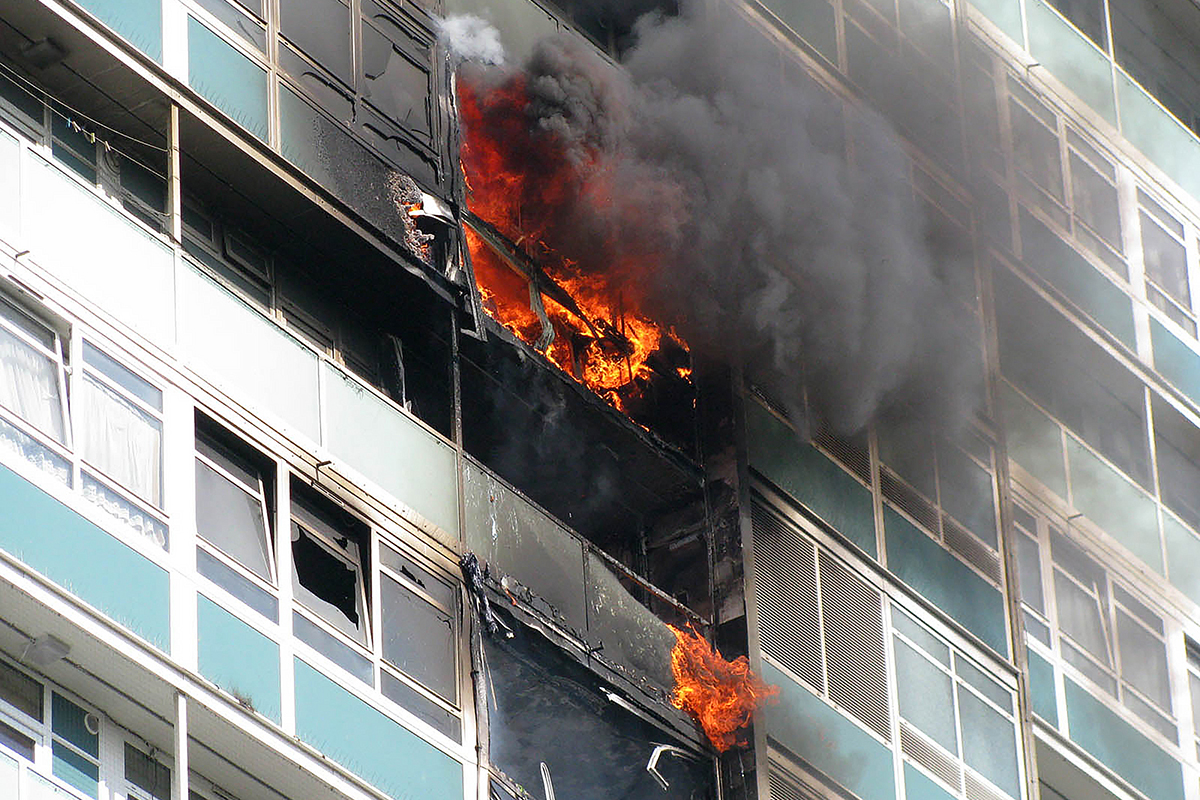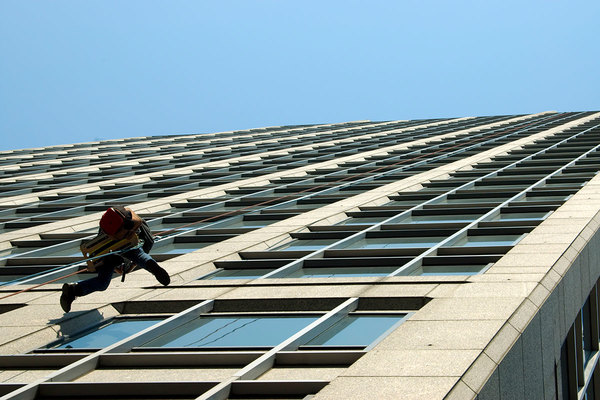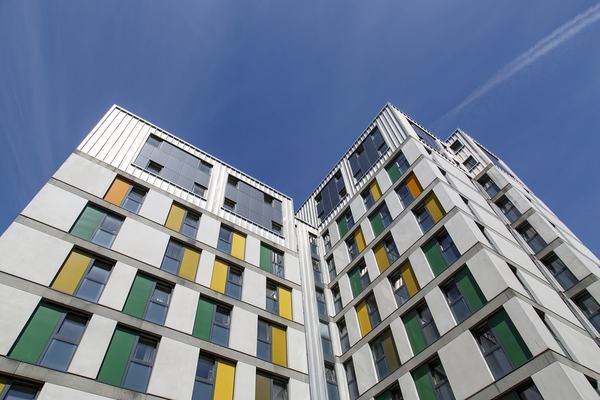You are viewing 1 of your 1 free articles
Revealed: combustible window panels widespread on social housing tower blocks
An exclusive, in-depth investigation by Inside Housing reveals the forgotten threat to fire safety from flammable window panels
Research by Inside Housing has revealed the wide use of combustible window panels, previously linked to deadly fires, on social housing tower blocks across England.
Freedom of Information Act (FOIA) requests sent to all stock-holding councils have revealed at least 117 tower blocks with insulated ‘infill panels’ installed in their window sets.
Councils owning hundreds of other blocks said they held no data on whether such panels were installed.
These panels are typically made of combustible insulation, covered by a thin metal sheet. They assisted the spread of flames up the outside of the building in the Lakanal House fire in south London in 2009 and the Garnock Court blaze in Irvine, North Ayrshire, in 1999.
The data was obtained as part of an in-depth investigation published today looking at how the focus on dangerous cladding has allowed a threat to fire safety from flammable window panels to go under the radar.
The full article, entitled The forgotten threat to high-rise tenants can be read by clicking the link below.
There are many varieties of panel, and it is not clear how those used on the 117 blocks would react in a fire. However, all the councils which were able to determine the materials used listed combustible forms of insulation – typically extruded polystyrene, phenolic or polyisocyanurate boards.
Councils responding to Inside Housing’s request were able to identify 117 towers which have been fitted with some form of window panel. These figures come from 19 councils and show the panels were typically installed in refurbishment projects from the mid-1990s to the late-2000s.
Stockport said it has phenolic boards fitted to 16 of its 22 towers. Stevenage has three towers with high-pressure laminate panels and polystyrene insulation, while Birmingham has 26 towers with panels comprised of aluminium and either polystyrene or polyisocyanurate insulation.
Others named Styrofoam – a type of polystyrene which is typically used in disposable coffee cups – manufactured by the giant American Dow Chemical Company, which was also used on the windows at Grenfell.
Councils including Newham, Kirklees and Hillingdon said they were testing window panels to ascertain the material used.
Eleven councils, collectively owning 747 towers, said they had no records on whether or not their buildings have panels – let alone what material they are made of.
These councils include the Royal Borough of Kensington and Chelsea. where Grenfell is located, and Southwark, which owns Lakanal House.
While the focus in the aftermath of Grenfell has been on aluminium cladding systems, Grenfell Tower was also fitted with combustible Styrofoam panels in between its windows.
A spokesperson for the Ministry for Housing, Communities and Local Government (MHCLG) said:
“As part of our consultation on banning combustible materials, we are looking at materials used in windows. We are currently considering the responses before deciding on next steps.”
Update: 1.20pm 30/08/18 Updated to include statement from the MHCLG
Never Again campaign
In the days following the Grenfell Tower fire on 14 June 2017, Inside Housing launched the Never Again campaign to call for immediate action to implement the learning from the Lakanal House fire, and a commitment to act – without delay – on learning from the Grenfell Tower tragedy as it becomes available.
One year on, we have extended the campaign asks in the light of information that has emerged since.
Here are our updated asks:
GOVERNMENT
- Act on the recommendations from Dame Judith Hackitt’s review of building regulations to tower blocks of 18m and higher. Commit to producing a timetable for implementation by autumn 2018, setting out how recommendations that don’t require legislative change can be taken forward without delay
- Follow through on commitments to fully ban combustible materials on high-rise buildings
- Unequivocally ban desktop studies
- Review recommendations and advice given to ministers after the Lakanal House fire and implement necessary changes
- Publish details of all tower blocks with dangerous cladding, insulation and/or external panels and commit to a timeline for remedial works. Provide necessary guidance to landlords to ensure that removal work can begin on all affected private and social residential blocks by the end of 2018. Complete quarterly follow-up checks to ensure that remedial work is completed to the required standard. Checks should not cease until all work is completed.
- Stand by the prime minister’s commitment to fully fund the removal of dangerous cladding
- Fund the retrofitting of sprinkler systems in all tower blocks across the UK (except where there are specific structural reasons not to do so)
- Explore options for requiring remedial works on affected private sector residential tower blocks
LOCAL GOVERNMENT
- Take immediate action to identify privately owned residential tower blocks so that cladding and external panels can be checked
LANDLORDS
- Publish details of the combinations of insulations and cladding materials for all high rise blocks
- Commit to ensuring that removal work begins on all blocks with dangerous materials by the end of 2018 upon receipt of guidance from government
- Publish current fire risk assessments for all high rise blocks (the Information Commissioner has required councils to publish and recommended that housing associations should do the same). Work with peers to share learning from assessments and improve and clarify the risk assessment model.
- Commit to renewing assessments annually and after major repair or cladding work is carried out. Ensure assessments consider the external features of blocks. Always use an appropriate, qualified expert to conduct assessments.
- Review and update evacuation policies and ‘stay put’ advice in the light of risk assessments, and communicate clearly to residents
- Adopt Dame Judith Hackitt’s recommended approach for listening to and addressing tenants’ concerns, with immediate effect
CURRENT SIGNATORIES:
- Chartered Institute of Housing
- G15
- National Federation of ALMOs
- National Housing Federation
- Placeshapers
Timeline: a short history of cladding and building regulations
- January 2000 - Following the tower block fire at Garnock Court - which killed a pensioner with disabilities - a report by the Environment, Transport and Regional Affairs Committee concluded that building regulations required "external surfaces (and hence cladding)... should be of a material classified as 'Class O' for spread of fire". It adds: "We do not believe that it should take a serious fire in which many people are killed before all reasonable steps are taken towards minimising the risks [from cladding fires]."
- January 2008 - The British Board of Agrément provides a certificate confirming a Class 0 rating for Reynobond PE, the material later installed on Grenfell Tower
- March 2013 - The coroner investigating the Lakanal House blaze in south London, which killed six, writes to Eric Pickles, communities secretary, advising him to review official guidance contained in Approved Document B "with particular regard to the spread of fire over the external envelope of a building". Mr Pickles replies, indicating that changes will not made until "2016/17"
- July 2014 - At a meeting of the Centre for Window and Cladding Technology, the government is warned that its guidance is not clear enough to prohibit the use of aluminium composite cladding with a polyethylene core (ACM(PE)) on tall buildings, which has been linked to a number of fires worldwide. The Building Research Establishment agrees to draft an 'FAQ' making it clear that this material is prohibited, but never does.
- 14 June 2017 - A kitchen fire at Grenfell Tower, west London, spreads to the recently installed ACM(PE) cladding. The resulting fire totally engulfs the building, trapping residents and killing 72 people.
- 22 June 2017 - The government writes to social landlords claiming ACM(PE) is banned by guidance, despite its failure to clarify this point before the fire. Philip Hammond, chancellor, repeats this claim on the BBC's Andrew Marr Show.
- 17 May 2018 - The government announces plans to ban combustible materials on high rises buildings, and later publishes draft 'clarified' guidance, removing the passage which had been interpretted as permitting 'Class 0' cladding.











